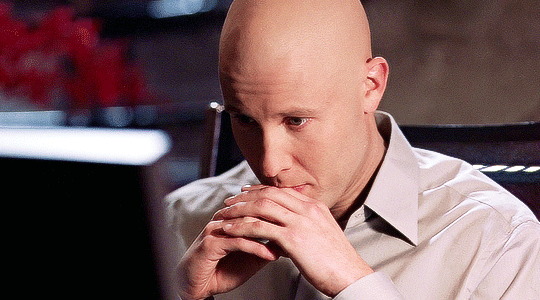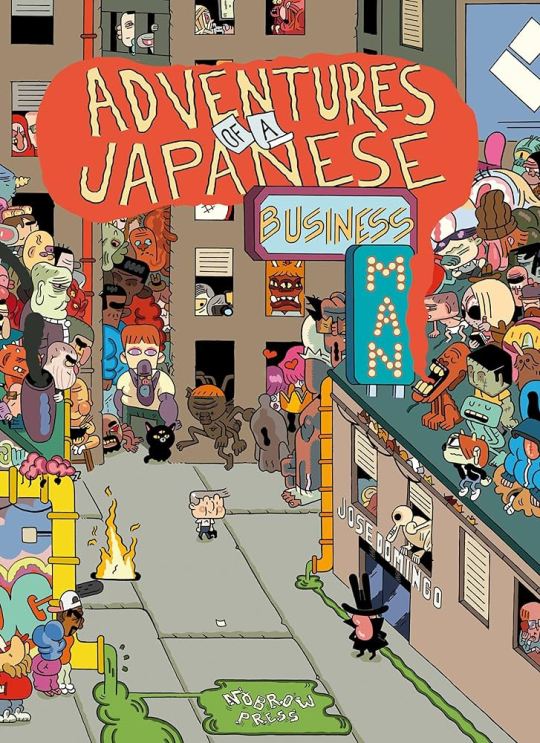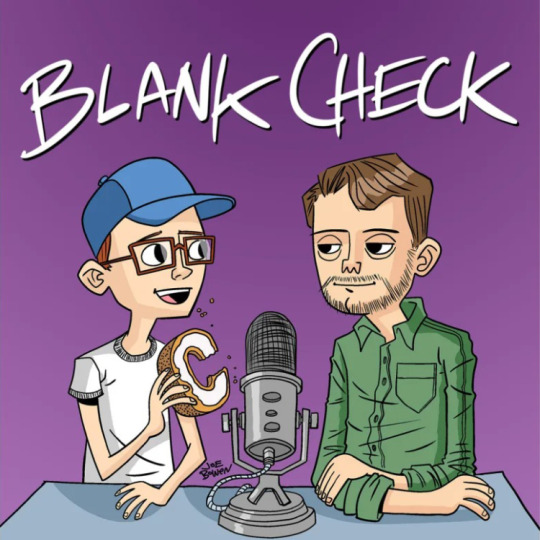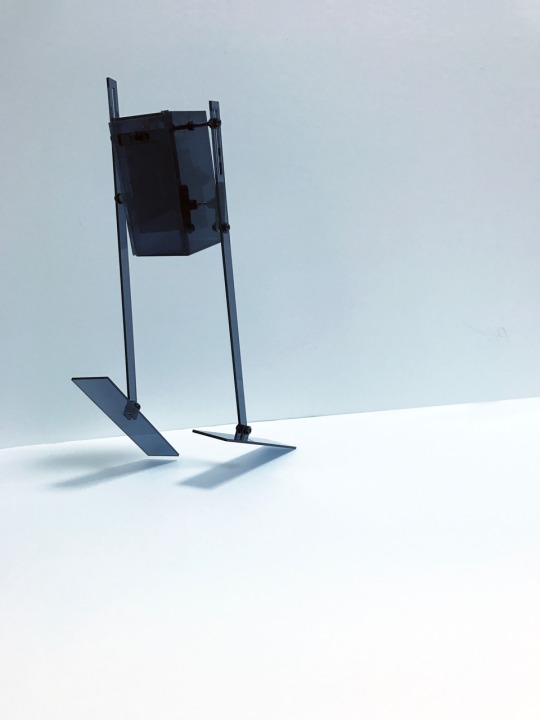#1.13 Kinetic
Text














—Smallville, “Kinetic”
#Smallville#Clark Kent#Tom Welling#Lex Luthor#Michael Rosenbaum#Chloe Sullivan#Allison Mack#1.13 Kinetic#Clex#Chlark
148 notes
·
View notes
Photo

6 notes
·
View notes
Text




How'd you come up with this? It was something Clark said. He told me you like to challenge people. Well, you've definitely risen to the challenge.
SMALLVILLE — 1.13 "Kinetic"
#smallville#smallvilleedit#svedit#dcedit#dctvedit#dailysmallville#dc#lana lang#lex luthor#dcmultiverse#otpsource#tvedit#lexana#s1#1.13#*
67 notes
·
View notes
Text
MONTHLY MEDIA: March 2024
……….FILM……….

Dune: Part Two (2024)
Every piece of technology felt and looked so tangible. The baby worm too! Love the tactile nature of this whole production and I hope studios take note that CG can't be the only tool in your belt. So much bigger than I imagined and just enjoyed the whole thing.
Forgetting Sarah Marshall (2008)
Ages surprisingly well and a script that lets the main quartet be both funny and layered.
……….TELEVISION……….

Columbo (1.01 to 1.03)
Hey I'm starting Columbo! Love that each episode is feature-length and Columbo appears fully formed right out of the gate. The sets and costumes are all so glamorous and L.A. Very excited to keep going.
Succession (2.05 to 3.04)
The Kendall play at the end of season 2 felt very much like the Kendall play at the end of season 1 and while I'm still a huge fan of this series, I just hope it's not the same going into season 3 and 4.
Delicious in Dungeon (Episode 1.09 to 1.13)
Great adaptation that isn't just a straight recreation of the artwork in the manga. The more kinetic/frantic moments in the animation are a nice departure and while they don't pop up in each episode, now that I'm 13 eps deep I can appreciate how they're sprinkled throughout.
Love is Blind (Episode 6.02 to 6.13)
It still amazes me that anyone goes on reality tv.
……….YOUTUBE……….

Twilight | ContraPoints by ContraPoints
Yes I did watch a nearly 3-hour essay on Twilight, sexual expression, and all that comes with that. And you should too.
VIDEO

Instagram fatigue and the rise of 'Resentment Reels' by Taylor Lorenz
While I haven't noticed this specific phenomenon, I have noticed Instagram declining as an app (both as a user trying to see anything other than ads, and a creator trying to get my work seen in between those ads). It's a bummer.
VIDEO

Saltburn: The Tumblr-ification of Cinema by Broey Deschanel
Every since I saw Saltburn, I've been thinking about what wasn't quite sitting right with me. This unlocked a lot of what I couldn't describe and most of it stems from the writer/director's upper class upbringing. Saltburn isn't a "take down the rich" movie, it's a horror story from the perspective of a wealthy family.
VIDEO

Why Is It So Hard To Cross The Street? (& What You Can Do To Help) by Strong Towns
Accidents where drivers hit a pedestrian are going up in my area so this really hit home. And for those feeling like there's nothing you can do at ground level, consider taking their course (not a paid sponsorship I'm just in real support of community-lead initiatives).
VIDEO
……….READING……….

Elric of Melniboné by Michael Moorcock
(Complete)
After picking up the last book in this series (which I've yet to read) I figured I'd start at the beginning. Love the fast pace pulpy action and I can see how this influenced the creation of D&D.
The Man in the Brown Suit by Agatha Christie
(Complete)
This one would lose me for stretches but the final quarter of the book is stronger. A lot less cozy and a lot more action than I was expecting but skimming other reviews it sounds like this was written during her more...adventure-focused era. Three books deep and I have to give Christie credit that each has been a completely different experience.

Adventures of a Japanese Business Man by Jose Domingo
(Complete)
Always love going back to this nearly wordless epic that follows the titular Japanese business man. I love the complexity of the earliest panels and wish that could carry throughout more of the book, but it's always such a treat to discover just where each new panel will go.

Delicious in Dungeon Volume 5 by Ryoko Kui
(Complete)
Enjoying rereading this with shorter breaks between volumes as I certainly missed/forgot details on my first read. It's here that the story and tone shifts from light romp to a more dramatic and dangerous affair but it never loses its spot-on humour. Love those dryad pumpkins.
Ultimate Spider-Man HC Volume 11 by Brian Michael Bendis, Stuart Immonen, David Lafuente, and more
(Complete)
Going from some of my other comics back to this, I'm struck by just how wordy it can get. Now knowing where the story goes, it was a great idea to prime readers to the idea of Peter Parker dying even if it's not from this event.
……….AUDIO……….

Blank Check with Griffin & David (Podcast)
Late to the game on this but really enjoying burning through their back catalog. Obviously started with their episode on Speed Racer as it's a near perfect film that you should watch right now.
……….GAMING……….

Oz: A Fantasy Role-Playing Setting (Andrews McMeel Publishing)
The Tuesday group just killed a mayor! So the aftermath of that is going to play out over the next couple of sessions. And the Mof1 crew is investigating the aftermath of their own district-wide catastrophe and it's all looking rather suspicious!

Spot It (Blue Orange Games)
I can't recommend this game enough. It's so easy to learn, rounds last maybe 5 minutes, it plays well with small or large groups of any age, and all it requires is pattern recognition and quick reflexes. Every time I've played this someone says they're going to buy a copy for themselves.
And that's it. See you in April!
17 notes
·
View notes
Text
Dissipation kinetics and the pre-harvest residue of chlorantraniliprole in pigeon pea Cajanus cajan L. succulent pods Using Ultra-High-Performance Liquid Chromatography with Photodiode array detector (UHPLC-PDA)
Studies were conducted to evaluate insecticide residues of Chlorantraniliprole in pigeon pea succulent pods after foliar application. Chlorantraniliprole was sprayed at 0.6ml/l on pigeon pea crop at the pod formation stage to control pod borers like Helicoverpa armigera and Maruca vitrata. Samples were drawn at 0, 1, 5, 10, 15, 20, 25, and 30 days after spray. A validated liquid chromatography method with a Photodiode Array (PDA) detector was used for the residue analysis of chlorantraniliprole. Separation was achieved through the C18 column in the reverse phase. The calibration graphs of chlorantraniliprole in acetonitrile solvent or five blank matrices were linear within the tested interval of 0.1 to 1ppm with a coefficient of determination over 0.9990. Dissipation of chlorantraniliprole was studied in first-order kinetic models (for which the coefficient of determination, R2 was 0.8684). Residues of chlorantraniliprole was 3.57, 3.16, 1.61, 1.13, 0.49, 0.21, 0.05 and 0.00mg/kg at 0, 1, 5, 10, 15, 20, 25 and 30 days after spraying. The residue level reached below the tolerance limit (MRL) (2mg/kg BW) of Codex Alimentarius Commission (CAC) on Pesticide Residues after 5 days of spray and below the detectable level after 25 days of spray in succulent pods and recorded a biological half-life of 4.36 days.
0 notes
Text
DYLAN’s SEISMOGRAPH SUMMARY.
Total energy release at earthquake at time interval dt - dW
dW = mechanical energy (performed work – deformation + kinetic energy) + heat energy
Seísmic energy – part of kinetic energy
E=∫ ∫ εdSdt, 0S
-c
En = Eo exp (- d Dn) Dn .
Dependence of seismic energy on magnitude:
log E = 11.3 + 1.8 M
A- seismic wave attenuation: log a = ---- - 0.5
Intensity attenuation
Kövestligethy formula: Io - In = 3 log (Dn / h) + 3 log e (Dn – h) α Blake formula: Io - In = k log (Dn / h)
Bohemian Massif: log E = 12.40 + 1.13 Io Gutenberg-Richter: log E = 11.3 + 1.8 M
0 notes
Photo


1x13 Kinetic
9 notes
·
View notes
Text
Biochemical Response Comparisons of a Competitive Microcycle Vs. Congested Fixture Periods in Elite Level European Champions League Soccer Players

The aim of this investigation was to analyses differences between post-game biochemical responses in congested (CP, when two consecutive games were played within 4 days or less) vs. non-congested (NCP, when two consecutive games were played within 5 days or more) periods. Assessment of creatine kinase (CK) and salivary cortisol (sCort) and immunoglobulin-A (sIgA) were performed across 12 separate training macrocycles of 14 competitive professional matches. The NCP analysis revealed significantly higher CK values from one day after match day (MD+1) than values found in MD and MD+2 (Effect size (ES): 0.82-1.13, p<0.0033). The CP analysis revealed no significant changes in CK values between MD, MD+1 and MD+2. Higher values on MD+2 in CP vs. NCP were also revealed (ES:0.27, p<0.05). No significant changes in sCort and sIgA were observed. Congested competitive periods induce significant biochemical changes revealed amongst elite soccer players that should influence their preparation and management
Keywords: Cortisol; Creatine kinase; Immune function; Football; Fixture congestion
Go to
Introduction
Across the course of an elite soccer season, the continual training, playing demands and additional stressors imposed upon players can lead to significant changes in haematological profiles [1]. Soccer is characterized by high intensity intermittent activity patterns. Players perform numerous intensive accelerations and decelerations in conjunction with high-intensity activities including sprinting, jumping, kicking and changing direction [2,3]. Such activity can cause muscle fiber damage. In the literature, CK is commonly used to examine exercise severity and exercise-induced muscle damage [4-6]. A soccer-game impose on players to repeat high numbers of very intensive accelerations and decelerations [7] that involve both concentric and eccentric contractions of the lower limb muscles, which may induce micro damages and structure changes to the muscles [8,9]. CK values have been shown to increase between 24-48h post-competitive soccer play, and to return to baseline approximately 72h or more [10-13], however, interestingly the variation across a typical competitive week of CK values linked to training load (TL) distribution have to date not been investigated. The presence of muscle damage after a soccer match could potentially impair subsequent training and competition performances, however further research is needed.
In addition, with CK analysis, and according to previous literature in this area, salivary cortisol (sCort) is another biochemical marker that is highly responsive to exercise and is directly related to the catabolic activity [14]. Cortisol has recently been suggested as a relevant indicator to monitor recovery in soccer, in response to the induced stress [15]. Induced stress by exercise is associated with the stimulation of the hypothalamic corticotropin-releasing hormone, pituitary adrenocorticotropic hormone release and the subsequent production of sCort [16,17]. Increased levels of sCort as a result of accumulated stress-inducement, can negatively impact mucosal immunity, subsequently increasing the risk of illness [18]. Based on the fact elite soccer players are faced with increased congested fixture schedules at domestic, European and International levels, increasing the knowledge of biochemical fatigue and recovery kinetics may assist in the TL management during congested periods (CP) in order to avoid injury and optimizing physical recovery and/or performance. Recent findings have suggested that congested fixture periods are associated with perturbations in mucosal immunity [19] and an elevation of injury incidence [18,20,21] observed a greater reduction in mean relative salivary SIgA concentration following an intensive competition period (nine games in eight weeks) compared with a less competitive period in rugby union (two games in four weeks) (29% vs 9% decrease in salivary SIgA). Moreover, the decrease in absolute SIgA concentrations were associated with a corresponding increase in sCort [18]. Furthermore, Mohr et al. [22] observed how playing three matches per week increased muscle damage, inflammatory and oxidative stress responses. Moreover, it was observed that the second match played after three days of recovery induced higher muscle damage and inflammation vs. the third game played after four days of recovery [22]. This maybe as a result to lingering muscle damage from first game causing added CK release as in poor muscular recovery. It might therefore be suggested that differences exist between periods of matches with three days in between, (e.g. CP) [23] and periods of matches with four days and more in between (non-congested period, NCP). Changes in these parameters have been previously associated to fatigue related to match play [12,15]. However, to our knowledge, no previous investigation has analysed the differences between CP vs. NCP regarding the physical and biochemical incidences of match play at any level, especially in elite level soccer players. Therefore, the novel and unique aim of the current investigation was to explore the evolution of CK and sCort during the in-season competitive phase, and analyses differences between congested vs. non-congested competitive phases in relation to player’s post-match fatigue kinetics.
Go to
Methods
Experimental approach to the problem
To explore the evolution of CK and sCort during the in-season competitive phase, and analyse differences between CP vs. NCP in relation to player’s post-match fatigue kinetics, all testing procedures were performed across the first phase of the 2016- 2017 season as to ensure no significant changes in physical status or fatigue was apparent and to maintain consistency of testing and sample collection [24]. The data set obtained, included 12 separate training macrocycles, inclusive of 14 competitive matches between August and October. The CP (n=5 macrocycles) was determined as a macrocycle including 2 competitive matches within 4 days or less. During this period samples were collected on match day (MD), 24h (MD+1) and 48h post-match (MD+2). The NCP (n=7 macrocycles) was determined as a microcycle including 2 competitive matches within 5 days or more. During NCP, samples were collected four, three and two days before the match (MD-4, MD-3 and MD-2, respectively), and on MD, MD+1 and MD+2. Although a total number of 59 training sessions were during the protocol period, only 28 training sessions were included in the procedure analysis, with a total number of 535 observations, to ensure a design internal validity and avoid sample-collecting bias.
Subjects
Twenty-three (n=23) elite male professional soccer players participated in this investigation. Players participating within this study were at the time competing at the elite level of European soccer within the UEFA Champions League and were recognized as the most successful domestic team in their national league. At the initiation of the study, players involved had a mean±SD age of 24.4±4.1 (range: 18 to 34) years, stature of 182.5±2.9 (168 to 195) cm, and body mass of 77.8±5.4 kg (61.2 to 93.5) kg. All participants had been playing soccer for 8 years or more and all but four of them were competing for their respective international team. Participants were informed that they were free to withdraw their individual data from the study at any time. Informed consent was obtained from all individual participants included in the study. The procedure performed in the present study was in accordance with the ethical standards of the institutional committee and with the 1964 Helsinki declaration and its later amendments or comparable ethical standards
Go to
Procedure
Throughout the investigation, players were allowed to consume commercially available isotonic sports drinks ad libitum during the training sessions and were also instructed to maintain normal daily food and water intake and CHO sport drinks during training when required. No additional dietary interventions were undertaken. Only data from players who met the following inclusion criteria similar to Coelho et al. [24] was assessed and included within the study (n=23). The established inclusion criteria required players had to have a minimum participation of 75min per game, not injured or ill on the collecting day or during the match and participated to the collective training sessions throughout the course of the macrocycle. If a player was injured, at any point through the macrocycle, their data for that period was excluded from the assessment until they returned to normal collective training with the rest of the group to play the official matches. The mean number of games played per player was 5.56 (range [1-11]). All blood sample collection was performed within the lab facilities of the club pre-training session. Trewin et al. [25] recently reviewed the influence of situational and environmental factors on physical outputs in soccer match-play. It was concluded from the findings that environmental factors influence the variability in match-running performance from match-to-match. As a result, taking the present design into account, many confounding variables may affect the data. Within this study all training and competitive match play was performed on natural turf pitches; the playing system adopted by the team remained in a 4-2-3-1 formation between the congested vs the non-congested fixtures.
Go to
Training Load Assessment
Across the training sessions for the investigation, each individual player’s motion pathways were tracked using a 10 Hertz GPS device (Viper, Statsport, Ireland). Research has shown this system to be a valid and reliable marker of assessment for monitoring team player’s movement demands [26]. For the purpose of this study, absolute (in meters) and relative (in meters per minute) total distance covered (TDC), high-speed running (HSR: >19.8 km.h-1) and absolute (in number) and relative (in number per minute) Accel (> 1 ms-2), Decel (< -1 ms-2)and sprints (> 24.4 kmh-1). The total values taken from the complete training sessions were used for analysis. The players wore the same GPS unit for each training session in order to keep the validity of the data.
Go to
Creatine Kinase Assessment
For the enzymatic measurement of plasma CK concentration, 32μL capillary blood samples were obtained from the fingertip of the index finger of the selected players pre-training and recovery days throughout the course of the investigation. The fingertip was cleaned with 95% ethanol and dried with cotton wool to remove excess liquid; an automatic lancet device was used to draw blood before a heparinized capillary tube (Reflotron®, catalog No. 955053202) was used to collect the sample. The capillary blood sample was then immediately placed onto a CK test strip (Reflotron®, catalog No. 1126695) through the use of a pipette and analyzed via the Boehringer Mannheim Reflotron Analyzer®.
Go to
Saliva Sampling
Resting saliva samples were obtained pre-breakfast throughout the study period on each training and recovery day. Free days away from the training facility were not measured due to logistics. All participants rinsed their mouth with water 10 min prior to saliva collection. Unstimulated, whole saliva was collected using an IPRO oral fluid collector (OFC, IPRO Interactive, Wallingford, UK). Participants rested one OFC swab on top of their tongue and closed their mouth to stimulate the saliva release. Upon 0.5mL level of saliva being absorbed by the OFC, an indicator line of the swab stem turned bright blue at which point the OFC was removed from the participant’s mouth and placed into a 3mL buffer solution for analysis. Upon required saliva being taken, samples were then passed immediately to a test administrator and analysed in order to determine the sCort and the sIgA concentration using an IPRO Reader (Ipro Interactive, Wallingford, UK). This method has previously been validated for the determination of these two hormones in the sporting environment [27-28].
Go to
Statistical analysis
Variables distribution was first tested with the Shapiro- Wilk normality test. When significant, a one-way analyse of variance (ANOVA) with repeated measure was used to examine the differences in the biochemical markers between days. Then t-test paired comparisons were used to point the differences. When non-significant, a non-parametric Friedman test was used, and then non-parametric paired Wilcoxon tests were assessed to point the differences. T-test paired comparisons and non-parametric Wilcoxon tests were also used to determine the differences between congested and non-congested weeks. Bonferroni’s correction was applied. The level of significance was set at p<0.05 for congested vs. non-congested comparisons and at p<0.0033 for days-to-days comparisons. For all analysis, the effect size (ES) was calculated and evaluated as small: < 0.50, moderate: 0.50-0.80, or large: > 0.80, as described by Cohen [29]. Coefficient of variation (CV) was also calculated from the ratio standard deviation (sd)/mean.
Go to
Results
MD-4, MD-3, MD-2 and MD-1 = four, three, two and one days before the match, respectively MD = match day; MD+1, MD+2 = one and two days after the match, respectively. CK = creatine kinase sCort = salivary cortisol TDC = total distance covered HSR = High-speed running (> km.h-1) NA = non-assessed * Higher than the same measure during non-congested week (p<0.05)
Data were presented as mean±sd throughout. Biochemical marker and training load changes across the weeks are presented in Table 1. During the typical NCP, CK values in MD+1 (CV: 45%) were significantly higher than values in MD-4 (ES: 1.11, CV: 37%), MD-2 (ES: 0.89, CV: 68%), MD (ES: 0.82, CV: 64%) and MD+2 (ES: 0.93, CV: 63%) (p<0.01) while CK values reported in MD-3 (CV: 65%) were higher than those reported in MD+2 (ES: 0.82, p<0.01) and MD-4 (0.81, p=0.05) (Figure 1). sCort values assessed throughout the week presented no significant changes (CV: 72-141%) (Figure 2). During the CP, no significant differences were observed among the day’s neither in CK, sCort and sIgA. When comparing CP and NCP, higher CK values were observed in MD+2 in CP (vs. MD+2 in NCP, ES: 0.27, p<0.01) (Figure 3). No differences between CP and NCP were observed in sCort and sIgA values. TDC (ES: 1.09), HSR (ES: 0.35) and accelerations (ES: 0.36) metrics all showed higher values in MD-1 during CP vs. NCP (p<0.05) (Table 1).
Go to
Discussion
The aim of the present study was to compare the variation of CK, sIgA and sCort responses during congested and noncongested periods in elite level soccer players. CK is well reported within literature as an indicator of exercise severity and exerciseinduced muscle damage [6,30] of which post-match increase was reported to be higher in soccer compared to other team sports like basketball, volleyball and handball [31]. Furthermore, CK, Cort and IgA were recently suggested as relevant indicators to monitor training load in elite soccer players [19,22,15]. The present study demonstrated that MD+1 (296±183 U.L-1) was the day of the week with the highest CK values (similar to MD-3 (283±185 U.L-1)) (Figure 1). This would highlight how muscular fatigue related to TL was at its highest point 24h following the match and three days before the match. Korean soccer players reported higher training-related perceived exertion (RPE) on MD-4 during the competitive season [32]. Similar high RPE were reported on MD-4 and MD-5 in young soccer players, and lower RPE in MD-3 and MD-2 (rest in MD-1). The elevated values of HSR (0.84±0.80 m.min-1) and number of accelerations (46.3±15.4) observed in MD-4 in comparisons to all other days, in the present investigation, confirmed that the analysed team followed the same microcycle periodization approach. Recent literature in the area of training specificity and tapering have highlighted similar tapering approaches, suggesting reducing TL as MD approaches to relieve fatigue and increase freshness [33-35]. Recently, it was reported amongst English Premier League soccer players that only MD-1 revealed a significantly reduced tapering effect and TL across a training microcycle when compared with other training days [33]. Additionally, Owen et al. [35] revealed significant differences in physical outputs were found between MD-2, MD-3 and MD-4 highlighting a structured periodized tapered approach (p<0.05). Furthermore, it was suggested that practitioners can maintain a uniformed and structured TL mesocycle whilst inducing variation of the physical outputs during the microcycle phase. However, it did not involve congested fixture periods in this study.
Days following the match revealed CK values were elevated MD+1 (296 ± 183 U.L-1 vs. MD: 183±118 U.L-1, p<0.003) returning to baseline on MD+2 (176±111 U.L-1). According to previous research, increased levels of CK are commonly observed 24h post-match, however, further analysis reveals how CK values generally remain elevated at least 48h after the match (2,17,22,24,39,43) which is contrary to our observations. Prematch measures of CK (~183 U.L-1) were similar to what was previously reported in elite Greek soccer (~150 U.L-1) (22), 2nd and 3rd Portuguese divisions (~180-200 U.L-1) [10,36] French Ligue 1 players (~230 U.L-1) [37] values reported in young Italian Serie A (~310 U.L-1) [12] and in Premier League under-21 players (~343 U.L-1) [13]. Subsequently, results in the current study revealed lower values on MD+1 (~296 U.L- 1) compared to all previous reports (from ~600 to ~1411 U.L-1), and likewise in MD+2 (~176 U.L-1 in ours vs. ~500 to ~900 U.L-1) [10-13,36,37] although only one investigation did not report significant differences between baseline and MD+2 values [37]. Even though CK is known to present high individual and between-match variability (43) it might be suggested that the differences observed within studies were related to the match-related physical and psychological strain. Indeed, it has been recently reported that CK values 24h following the match are associated with the physical activity performed during the match [38,39]. Interestingly, the most marked increase in CK values post-exercise was reported in less well-trained subjects [40] and with lesser levels of lower-limb strength in elite level soccer players [6]. Taking these findings into consideration, it might also be suggested that the elite level players used in the present investigation were higher trained than those from compared literature. Furthermore, the investigated matches occurred at the beginning of the season when players just finished the high-TL pre-season period and were supposed to be at their greater shape [41,42] and subsequent lower biochemical markers related to fatigue [43]. It is therefore possible that the matches in the present investigation did not represent a much higher muscular stimulus than the usual training load of these players. This may therefore suggest that if teams and players are trained at a higher level of stimulus, then they may be able to recover from game with greater efficiency.
No evolutions were found in sCort concentrations between pre and post-match assessments (Figure 2). Recently, Souglis et al. [31] reported an increased level of blood cortisol immediately after elite team sports games including soccer, which returned to pre-match values 13 hours after the match. Also, Moreira et al. [16] observed a trend to increase in sCort between pre-and post-match measures in male professional players, but with no significant differences. These results were in accordance with those from the present investigation, which its first postmatch measure was only made 24h after the end of the game. Within all observations combines, it seems that sCort might increase immediately after a soccer game, but values might have returned to baseline the day after. Recently, one study reported decreased level of blood cortisol 24h and 48h after a soccer match, compared to pre-match values in young soccer players [15]. In this particular investigation, the elevated pre-match levels may have been caused by non-exercise stress, for example environmental and psychological stress can modulate cortisol [44].
The second findings from the present investigation was that CK, and neither sCort nor sIgA, was affected by a congested calendar of competitive matches. Indeed, the levels of CK assessed in MD+2 from the CP (206±116 U.L-1) were significantly higher than levels assessed in MD+2 from the NCP (176±111 U.L-1, p<0.05, ES: 0.27). Furthermore, the differences observed, with MD+1 being higher than MD+2 in NCP, were not anymore observed in the CP. CP have been associated with unchanged physical and technical performance during elite soccer matches, even when periods were prolonged for several months [45,46]. However, the literature reported an increase in injury occurrence in association with fixtures congestion [21,47]. Recently, Mohr et al. [22] reported higher CK responses when playing two matches in three days, than in four. The present report gave further and novel information that showed the impact of playing two matches in three to four days (vs. five or more) on muscle damages, which, as a supposed induced cumulated fatigue, were more elevated 48h after a congested fixture than when playing one match in a week with sufficient recovery. The levels of sCort and sIgA remained statistically unchanged in both CP and NCP. However, it was interesting to observe that sIgA values increased from MD+1 (292±157μg.mL-1) to MD+2 (333±243μg mL-1) during NCP and decreased (304±193 to 266±163μg. mL-1, respectively) during CP, even though not significantly (p>0.0033). Moreira et al. [49] recently reported a decrease in salivary immune-endocrine markers, like sIgA and testosterone, from the first match of a congested soccer tournament to the last one, in young elite players. They also reported no statistical variations in sCort across the tournament [50]. Earlier, Mortatti et al. [48] also reported no variations in sCort across a period of six matches in 20 days in young soccer players, and a decrease in sIgA in second and last matches. All together, these findings might suggest that a congested competitive calendar in elite soccer players induces fatigue related to muscle damage, mucosal immunity, and anabolism activity, but not hypothalamicpituitary- adrenal axis responses. A limitation associated with the current study is that testosterone was not measured, as such the testosterone: cortisol ratio could not be calculated. This ratio is of interest as it has been reported as an indicator of homeostasis between anabolic and catabolic process in the body [50,51]. Furthermore, the testosterone: cortisol ratio has been associated with overtraining in team sport athletes [14] and could be used to monitor stress and recovery state in soccer [38,52]. Interestingly, findings from the current study reveal how the there was significantly higher training load on MD-1 during CP when compared with the NCP. This finding may be as a result of increased freshness and the reduced training load of MD-2 playing a subconscious role on the application and motivation to train at a greater intensity. Although this is difficult to predict and requires further investigation in the future, the technical staff may also have increased the content somewhat as a way of ensuring the players are prepared for the additional fixture post- a low loading day. Furthermore, it should be highlighted that this increase in workload pre-game may have played a role in the accumulated fatigue in the CP even though the effect size in difference were small for both HSR and accelerations (0.34- 0.36). Even though the workload was slightly increased across the CP vs. NCP the biochemical stress observed through prematch CK assessment was the same. These observations further indicate the need from the technical staff to plan and understand the impact CP plays on the fatigue and state of the player in order to manipulate accordingly training workload to increase performance [53].
Go to
Limitations
Ensuring large subject participation within elite level soccer research is extremely difficult. The ability to meet subject inclusion criteria is often challenging due numerous external influences such as suspensions, team selections, injury and illness across an in-season period of testing. Therefore, with respect to this investigation, future research should look to draw from baseline data across more than one team at different levels to show how they can be compared across. Ensuring a larger subject pool in addition to increasing the sampling period and getting a same number of matches collected within the periods in order to add greater strength to the association demonstrated across CP vs. NCP would be beneficial however, although understanding this as a priority, unfortunately this is not always possible when conducting scientific studies at the elite level of a sporting organization. Furthermore, it may be beneficial in future research to examine a similar experimentation method across a range of competitive levels (i.e. professional, youth and amateur) as a way of determining key differences at varying playing levels and allow the findings of this to increase knowledge of changes of differing proficiencies. It should be highlighted that a limitation of the study was not including a control group. This is something that future research should try and include, however based on the fact that the study group was a group of elite professional soccer players, the resources available were allocated for the primary professional team.
Go to
Conclusion
The purpose of this investigation was to explore the evolution of biochemical responses of CK, salivary IgA and cortisol during the in-season competitive phase, and analyse the various responses associated with congested vs. non-congested competitive phases in relation to player’s post-match fatigue kinetics. The findings of this study may further enhance the capability of individuals involved within the preparation of elite players to manage specific congested or non-congested phases of the competitive season to produce improved decisions as the players in the present study showed impairments in postmatch CK levels during CP. Conclusions drawn from the current investigation suggests that congested competitive periods at the elite level of the game induce significant changes in biochemical stress responses (i.e. muscle damage). As a result of these findings individuals involved with the physical preparation of such players should understand the demands imposed on players in congested fixture periods and adequately adjust preparation and squad rotation accordingly.
Go to
Practical applications
At the elite level of the game professional soccer training and competitive match play induces a significant chronic stress on the body, which influences the biochemical responses of players [1]. Such continued demands and fluctuating physiological changes predispose players to health, wellbeing and performance risks based on the high intensity and energy expending nature of the sport. This novel investigation is the first study to have examined the relationship of biochemical responses based on assessment of salivary cortisol and CK across congested and non-congested periods at the elite level of the game. Based on the data collected in the current study, it is recommended manipulation of the training intensity, recovery strategies and the intelligent integration of squad rotation processes be present as a way of maximising performance whilst reducing the risk of chronic fatigue and injury risk. This study may open up the discussion area of additional ways to include monitoring and assessment of players through congested periods of the competitive season and be considered as one of many factors in injury prevention. Greater focus should be placed on the training intensity and volume over a longer-term, especially approaching congested periods of the season with the aim of ensuring the potential reduction of fatigue that may lead to overuse injuries. Therefore, regularly monitoring biochemical changes (i.e. CK) within the preparation period and across the competitive season to try and ensure optimal player preparation state is something that should be highly considered.
Go to
0 notes
Photo

人間の歩く動作を模した足踏みをする彫
刻です. 有機的にもどかしく動く無機物
に対して意思があると錯覚してしまう現
象を体現しました. 天吊にし不規則に回
転する動きを加えることで同じ動作のル
ープでも飽きさせない工夫をしています.
SIer | kinetic art_2017 1.13
若松 晶
2 notes
·
View notes
Text



—Smallville, “Kinetic”
94 notes
·
View notes
Photo

7 notes
·
View notes
Video
youtube
With BTS‘s release of their new song, “Dynamite”, fans have been streaming not only their comeback, but other music videos as well. As such, all of their music videos are getting a ton of new views, and likes as well! Because of this, they are currently owning the MVs gaining the most views, on average, per day, which is calculated by K-Pop data site Aoimirai. Here are the current top 15 music videos on this list. 15. “Spring Day” by BTS Current average likes per day: 66.5k Total likes: 6.15 million Total views: 338.2 million Release date: February 12, 2017 14. “We Are Bulletproof: The Eternal” by BTS Current average likes per day: 72.4k Total likes: 4.49 million Total views: 36.0 million Release date: June 11, 2020 13. “Daechwita” by Agust D Current average likes per day: 97.5k Total likes: 7.65 million Total views: 125.8 million Release date: May 22, 2020 12. “ON” (Kinetic Manifesto Film) by BTS Current average likes per day: 98.7k Total likes: 9.77 million Total views: 238.5 million Release date: February 21, 2020 11. “Fake Love” by BTS Current average likes per day: 107.5k Total likes: 13.2 million Total views: 753.3 million Release date: May 18, 2018 10. “Not Shy” by ITZY Current average likes per day: 108.6k Total likes: 2.09 million Total views: 23.4 million Release date: August 17, 2020 9. “Idol” by BTS Current average likes per day: 109.0k Total likes: 13.0 million Total views: 725.2 million Release date: August 24, 2018 8. “DNA” by BTS Current average likes per day: 122.1k Total likes: 15.6 million Total views: 1.06 billion Release date: September 18, 2017 7. “Mic Drop” by BTS ft. Steve Aoki Current average likes per day: 126.3k Total likes: 10.84 million Total views: 721.5 million Release date: November 24, 2017 6. “Drama” by TXT Current average likes per day: 128.2k Total likes: 1.13 million Total views: 5.52 million Release date: August 18, 2020 5. “ON” by BTS Current average likes per day: 140.9k Total likes: 9.32 million Total views: 179.0 million Release date: February 27, 2020 4. “Stay Gold” by BTS Current average likes per day: 197.3k Total likes: 8.58 million Total views: 99.7 million Release date: June 23, 2020 3. “Boy With Luv” by BTS Current average likes per day: 227.1k Total likes: 17.2 million Total views: 901.5 million Release date: April 12, 2019 2. “Black Swan” by BTS Current average likes per day: 276.8k Total likes: 7.42 million Total views: 151.1 million Release date: March 4, 2020 1. “Dynamite” by BTS Current average likes per day: 8.95 million (estimated based on current trajectory) Total likes: 8.17 million Total views: 88.1 million Release date: August 21, 2020 These Urban Dictionary Definitions Of SEVENTEEN's Members Will Make You Wheeze And Agree by Korea Stars TV
0 notes
Text
Dissipation kinetics and the pre-harvest residue of chlorantraniliprole in pigeon pea Cajanus cajan L. succulent pods Using Ultra-High-Performance Liquid Chromatography with Photodiode array detector (UHPLC-PDA)
Studies were conducted to evaluate insecticide residues of Chlorantraniliprole in pigeon pea succulent pods after foliar application. Chlorantraniliprole was sprayed at 0.6ml/l on pigeon pea crop at the pod formation stage to control pod borers like Helicoverpa armigera and Maruca vitrata. Samples were drawn at 0, 1, 5, 10, 15, 20, 25, and 30 days after spray. A validated liquid chromatography method with a Photodiode Array (PDA) detector was used for the residue analysis of chlorantraniliprole. Separation was achieved through the C18 column in the reverse phase. The calibration graphs of chlorantraniliprole in acetonitrile solvent or five blank matrices were linear within the tested interval of 0.1 to 1ppm with a coefficient of determination over 0.9990. Dissipation of chlorantraniliprole was studied in first-order kinetic models (for which the coefficient of determination, R2 was 0.8684). Residues of chlorantraniliprole was 3.57, 3.16, 1.61, 1.13, 0.49, 0.21, 0.05 and 0.00mg/kg at 0, 1, 5, 10, 15, 20, 25 and 30 days after spraying. The residue level reached below the tolerance limit (MRL) (2mg/kg BW) of Codex Alimentarius Commission (CAC) on Pesticide Residues after 5 days of spray and below the detectable level after 25 days of spray in succulent pods and recorded a biological half-life of 4.36 days.
0 notes
Text
Broadband Study of High-Synchrotron-Peaked BL Lac Object 1ES 1218+304. (arXiv:2006.16030v1 [astro-ph.HE])
The origin of the multiwavelength emission from the high-synchrotron-peaked BL Lac 1ES 1218+304 is studied using the data from {\it Swift UVOT/XRT}, {\it NuSTAR} and {\it Fermi-LAT}. A detailed temporal and spectral analysis of the data observed during 2008-2020 in the $\gamma$-ray ($>100$ MeV), X-ray (0.3-70 keV), and optical/UV bands is performed. The $\gamma$-ray spectrum is hard with a photon index of $1.71\pm0.02$ above $100$ MeV. The {\it Swift UVOT/XRT} data show a flux increase in the UV/optical and X-ray bands; the highest $0.3-3$ keV X-ray flux was $(1.13\pm0.02)\times10^{-10}{\rm erg\:cm^{-2}\:s^{-1}}$. In the 0.3-10 keV range the averaged X-ray photon index is $>2.0$ which softens to $2.56 \pm 0.028$ in the 3-50 keV band. However, in some periods, the X-ray photon index became extremely hard ($<1.8$), indicating that the peak of the synchrotron component was above $1$ keV, and so 1ES 1218+304 behaved like an extreme synchrotron BL Lac. The hardest X-ray photon index of 1ES 1218+304 was $1.60 \pm 0.05 $ on MJD 58489. The time-averaged multiwavelength spectral energy distribution is modeled within a one-zone synchrotron self-Compton leptonic model using a broken power-law and power-law with an exponential cutoff electron energy distributions. The data are well explained when the electron energy distribution is $E_{\rm e}^{-2.1}$ extending up to $\gamma_{\rm br/cut}\simeq(1.7-4.3)\times10^{5}$, and the magnetic field is weak ($B\sim1.5\times10^{-2}$ G). By solving the kinetic equation for electron evolution in the emitting region, the obtained electron energy distributions are discussed considering particle injection, cooling, and escape.
from astro-ph.HE updates on arXiv.org https://ift.tt/3eMsIiX
0 notes
Link
GET THIS BOOK
Author:
Rajni Garg & Randhir Singh
Published in: McGraw Hill Education Release Year: 2015 ISBN: 978-93-83286-90-4 Pages: 1677 Edition: First Edition File Size: 40 MB File Type: pdf Language: English
Description of Inorganic Chemistry
Inorganic chemistry is a dynamic and fascinating field of chemistry growing at a rapid pace in both research and theoretical aspects. The lusty impact of this field has introduced the subject as an essential part of the curricula of all universities. The first edition of Inorganic Chemistry aims to provide the essentials of the subject in an easy and understandable manner. The book is an outcome of the teaching and research experience of the authors so that students can learn concept formulation instead of just rote memorization.
The book is primarily aimed for students at undergraduate (BSc pass and honors) and postgraduate (MSc pass and honors) levels taking inorganic chemistry as a special subject for a one-semester or a full-year course.
Inorganic Chemistry book is designed to provide concise information about various aspects of inorganic chemistry that can also be used by students from various fields involving inorganic compounds, such as environmental science, polymer science, industrial chemistry, bioinorganic chemistry, and metallurgy. However, they can skip the irrelevant topics as per their field. Inorganic Chemistry book will also be a source of reference for the students doing BTech courses or taking inorganic chemistry as an ancillary subject. It will also be helpful for the challenging requirements of various competitive exams such as CSIR, SLET, and GATE.
The content of the Inorganic Chemistry book has been framed in an easy-to-understand language that would generate interest in the subject. All the chapters provide descriptive information and are enriched with illustrations, comprehensible articles, solved examples, both numerical as well as theoretical, to satisfy the needs of students. At the end of each chapter, a concise summary has been given for quick revision before examinations. The chapters have been enriched with exercises comprising theory-based general questions and objective-type questions to provide an insight into the examination pattern. The book introduces descriptive and illustrative information about structure of atoms and nuclei, radioactivity, chemical bonding, molecular symmetry, structure of solids, redox reactions, non-aqueous solvents, acids and bases, extraction of elements, Periodic Table, chemistry of known elements, coordination chemistry, organometallics, inorganic polymers, bioinorganic chemistry, environmental chemistry and analytical chemistry. Although it is very difficult to include such a vast subject in a single book, a reasonable attempt has been made to cover a variety of important topics. We hope the Inorganic Chemistry book will prove very helpful in providing the complex concepts of inorganic chemistry in an easy way.
Content of Inorganic Chemistry
1. Structure of Atom
1.1 Introduction
1.2 Rutherford Scattering Experiment
1.3 Planck’s Quantum Theory of Radiation
1.4 Photoelectric Effect
1.5 Atomic Spectrum of Hydrogen
1.6 Bohr’s Model of the Atom
1.7 Sommerfeld’s Extension of Bohr’s Atomic Model
1.8 Dual Character of Matter
1.9 Heisenberg’s Uncertainty Principle
1.10 Compton Effect
1.11 Schrodinger Wave Equation
1.12 Quantum Numbers
1.13 Probability Distribution Curves
1.14 Rules for Filling of Orbitals and Electronic Configuration of
Elements
Summary
Solved Examples
Exercises
2. Nuclear Chemistry
2.1 Nucleus
2.2 Composition of the Nucleus
2.3 Nuclear Forces
2.4 Nuclear Stability
2.5 Nuclear Models
2.6 Nuclear Reactions
2.7 Radioactivity
2.8 Radioactive Disintegration
2.9 Law of Successive Disintegration: Radioactive Equilibrium
2.10 Soddy-Fajans and Russel Group Displacement Law
2.11 Artificial Radioactivity
2.12 Applications of Radioactive Isotopes
Summary
Solved Examples
Exercises
3. Chemical Bonding
3.1 Introduction
3.2 Ionic Bond or Electrovalent Bond
3.3 Covalent Bond (Lewis-Langmuir Concept)
3.4 Dipole Moment
3.5 Coordinate Covalent Bond or Dative Bond
3.6 Van der Waals’ Forces or Intermolecular Forces
3.7 Hydrogen Bond
3.8 Orbital Overlap Theory
3.9 Molecular Orbital Theory
3.10 Metallic Bond
3.11 Hybridisation
3.12 Sidgwick – Powell Theory
3.13 Valence Shell Electron-pair Repulsion Theory (VSEPR theory)
3.14 Shapes of Some Common Molecules
3.15 Linnett Double Quartet Theory (LDQ Theory)—Modification of
Lewis Longmuir Octet Theory
3.16 Resonance
Summary
Solved Examples
Exercises
4. Molecular Symmetry
4.1 Introduction
4.2 Symmetry Element
4.3 Multiplication of Symmetry Operations
4.4 Mathematical Group
4.5 Matrix Representation of Symmetry Operations
4.6 Terms Symbols of Diatomic Molecules
4.7 Applications of Group Theory
4.8 Structure of Solids
Summary
Solved Examples
Exercises
5. Redox Reactions
5.1 Introduction
5.2 Electrochemical Cell
5.3 Kinetics of Redox Reactions
5.4 Redox Reactions in Aqueous Systems
5.5 Diagrammatic Representation of Potential Data
Summary
Solved Examples
Exercises
6. Non-aqueous Solvents
6.1 Introduction
6.2 Classification of Solvents
6.3 Liquid Ammonia
6.4 Liquid Sulphur Dioxide
6.5 Anhydrous Hydrogen Fluoride
6.6 Anhydrous Sulphuric Acid
6.7 Acetic Acid
6.8 Liquid Dinitrogen Tetroxide, N2O4
6.9 Molten Salts and Ionic Liquids
6.10 Concept of Acid-Base
6.11 Acid Strength Behaviour in the Periodic Table
Summary
Solved Examples
Exercises
7. Extraction of Elements
7.1 Introduction
7.2 Occurrence of Elements
7.3 Metallurgy
7.4 Purification of Impure Metals or Refining
7.5 Thermodynamics of the Metallurgy: Ellingham Diagram
Summary
Solved Examples
Exercises
8. Periodic Table and Periodic Properties
8.1 Introduction
8.2 Mendeleev's Periodic Table
8.3 Modern Periodic Law and Periodicity
8.4 Long form of Periodic Table
8.5 Periodic Properties
8.6 Shielding or Screening Effect
Summary
Solved Examples
Exercises
9. Hydrogen and its Compounds
9.1 Introduction
9.2 Position of Hydrogen in the Periodic Table
9.3 Occurrence and Production of Hydrogen
9.4 Physical Properties of Hydrogen
9.5 Chemical Properties of Hydrogen
9.6 Uses of Hydrogen
9.7 Different Forms of Hydrogen
9.8 Spin Isomers of Hydrogen
9.9 Isotopes of Hydrogen
9.10 Compounds of Hydrogen
9.11 Water H2O
9.12 Heavy Water (D2O)
Summary
Solved Examples
Exercises
10. Chemistry of Group 1 Elements
10.1 Introduction
10.2 General Characteristics of Group I Elements
10.3 Chemical Properties of Alkali Metals
10.4 Lithium (Li)
10.5 Sodium (Na)
10.6 Potassium (K)
10.7 Rubidium, Caesium and Francium
Summary
Solved Examples
Exercises
11. Chemistry of Group 2 Elements
11.1 Introduction
11.2 General Characteristics of Group 2 Elements
11.3 Chemical Properties of Alkaline Earth Metals
11.4 Beryllium (Be)
11.5 Magnesium (Mg)
11.6 Calcium (Ca)
11.7 Strontium (Sr)
11.8 Barium (Ba)
11.9 Radium (Ra)
11.10 Portland Cement
Summary
Solved Examples
Exercises
12. Chemistry of Group 13 Elements
12.1 Introduction
12.2 Electronic Structure
12.3 General Physical Properties
12.4 Diagonal Relationship between Boron and Silicon
12.5 Chemical Properties of Group 13 Elements
12.6 Boron
12.7 Aluminum (Al)
12.8 Gallium (Ga)
12.9 Indium and Thallium (Th)
12.10 Comparision of Compounds of Group 13 Elements
Summary
Solved Examples
Exercises
13. Chemistry of Group 14 Elements
13.1 Introduction
13.2 General Properties of Group 14 Elements
13.3 Anomalous Behaviour of Carbon
13.4 Carbon and Silicon—Comparison of Properties
13.5 Carbon
13.6 Silicon (Si)
13.7 Germanium (Ge)
13.8 Tin (Sn)
13.9 Lead (Pb)
13.10 Comparative Account of Compounds of Group 14 Elements
Summary
Solved Examples
Exercises
14. Chemistry of Group 15 Elements
14.1 Introduction 14.1
14.2 General Properties of Group 15 Elements
14.3 Chemical Properties of Group 15 Elements
14.4 Nitrogen (N)
14.5 Phosphorus (P)
14.6 Arsenic (As)
14.7 Antimony (Sb)
14.8 Bismuth (Bi)
Summary
Solved Examples
Exercises
15. Chemistry of Group 16 Elements
15.1 Introduction
15.2 General Properties of Group 16 Elements
15.3 Anomalous Behaviour of Oxygen
15.4 Oxygen (O2
)
15.5 Sulphur (S2
)
15.6 Selenium (Se)
15.7 Tellurium (Te)
15.8 Polonium (Po)
15.9 Comparative Account of Compounds of Group 16 Elements
Summary
Solved Examples
Exercises
16. Chemistry of Group 17 Elements
16.1 Introduction
16.2 General Characterisation
16.3 Chemical Properties
16.4 Fluorine (F)
16.5 Chlorine (Cl)
16.6 Bromine (Br)
16.7 Iodine (I)
16.8 Astatine (At)
16.9 Interhalogen Compounds
16.10 Polyhalides
16.11 Pseudohalogens and Pseudohalides
Summary
Solved Examples
Exercises
17. Chemistry of Group 18 Elements
17.1 Introduction
17.2 History and Discovery
17.3 Occurrence and Isolation of Noble Gases
17.4 Uses of Noble Gases
17.5 Physical Properties
17.6 Chemical Properties
17.7 Chemistry of Xenon (Xe)
17.8 Compounds of Krypton (Krf2
)
17.9 Compounds of Radon (Rn)
Summary
Solved Examples
Exercises
18. Chemistry of d-block Elements
18.1 Introduction
18.2 Classification of d-block Elements
18.3 General Characteristic of d-block Elements
Summary
Solved Examples
Exercises
19. Chemistry of Elements of 3d Series
19.1 Introduction
19.2 Scandium (Sc)
19.3 Titanium (Ti)
19.4 Vanadium (V2
)
19.5 Chromium (Cr)
19.6 Manganese (Mn)
19.7 Iron (Fe)
19.8 Cobalt (Co)
19.9 Nickel (Ni)
19.10 Copper (Cu)
19.11 Zinc (Zn)
Summary
Solved Examples
Exercises
20. Chemistry of Elements of 4d Series
20.1 Introduction
20.2 Yttrium (Y)
20.3 Zirconium (Zr)
20.4 Niobium (Nb)
20.5 Molybdenum (Mo)
20.6 Technetium (Tc)
20.7 Ruthenium (Ru)
20.8 Rhodium (Rh)
20.9 Palladium (Pd)
20.10 Silver (Ag)
20.11 Cadmium (Cd)
Summary
Solved Examples
Exercises
21. Chemistry of 5d Series
21.1 Introduction
21.2 Hafnium (HF)
21.3 Tantalum (Ta)
21.4 Tungsten (W)
21.5 Rhenium (Re)
21.6 Osmium (Os)
21.7 Iridium (Ir)
21.8 Platinum (Pt)
21.9 Gold (Au)
21.10 Mercury (Hg)
Summary
Solved Examples
Exercises
22. Chemistry of Lanthanides and Actinides
22.1 Introduction
22.2 Lanthanides
22.3 Lanthanum (La)
22.4 Actinides
22.5 Thorium (Th)
22.6 Uranium (U)
22.7 Plutonium (Pu)
Summary
Solved Examples
Exercises
23. Coordination Compounds-I Basics Concepts:
Nomenclature and Stereochemistry
23.1 Introduction
23.2 Important Terms
23.3 Rules for Nomenclature of Coordination Compounds
23.4 Rules for Formula of the Coordination Compounds
23.5 Classification of Complexes
23.6 Isomerism
Summary
Solved Examples
Exercises
24. Coordination Compounds— II Theories of Bonding
24.1 Introduction
24.2 Techniques for Study of Complexes
24.3 Theories of Coordination
24.4 Crystal Field Theory (CFT)
24.5 The Ligand Field Theory-Molecular Orbital Theory
Summary
Solved Examples
Exercises
25. Coordination Compounds III: Quantitative Basis of
Crystal Field Theory
25.1 Introduction
25.2 Determination of Octahedral Crystal Field Potential
25.3 Determination of Tetragonal Crystal Field Potential
25.4 Determination of Square Planar Crystal-Field Potential
25.5 Determination of Tetrahedral Crystal-Field Potential
25.6 Determination of Cubic Crystal-Field Potential
25.7 Structural and Thermodynamic Effects of Splitting of Orbitals
25.8 Jahn-Teller Effect (Distortion of Geometry)
Summary
Solved Examples
Exercises
26. Coordination Complexes IV: Spectroscopic and Magnetic
Properties of Coordination Compounds
26.1 Introduction
26.2 Coupling Schemes
26.3 Energy Terms and the Energy States
26.4 Electronic Spectra of Transition-Metal Compounds
26.5 Orgel Diagrams
26.6 Racah Parameters
26.7 Terms Correlation Diagrams under the Effect of Weak and Strong
Field Effects
26.8 Tanabe-Sugano Diagrams (T-S Diagram)
26.9 Charge-Transfer Transitions
26.10 Types of Magnetism
Summary
Solved Examples
Exercises
27. Coordination Compounds – λ The Reaction Mechanisms
of Transition-Metal Complexes
27.1 Introduction
27.2 Ligand-substitution Reactions
27.3 Oxidation-reduction Reactions in Coordination Compounds
Summary
Solved Examples
Exercises
28. Complexes of π-Acceptor Ligands
28.1 Introduction
28.2 Complexes of Carbonyls
28.3 Complexes of Nitric Oxide
28.4 Complexes of Phosphines
28.5 Complexes of Cyanide and Isocyanide Ligands
Summary
Solved Examples
Exercises
29. Chemistry of Organometallic Compounds
29.1 Introduction
29.2 Organometallic Compounds of Alkali Metals
29.3 Organometallic Compounds of Alkaline Earth Metals
29.4 Organometallics of Group 13 Elements
29.5 Organometallics of Group 14 Elements
29.6 Organometallics of Group 15 Elements
29.7 Organometallic Compounds of Transition Elements
Summary
Solved Examples
Exercises
30. Metal Clusters
30.1 Introduction
30.2 Polynuclear Compounds of Oxygen and other Chalcogens
30.3 Clusters of p-block Elements other than Chalcogens
30.4 Low-valent Metal Clusters
30.5 High-Valent Metal Clusters or Halide-type Clusters
Summary
Solved Examples
Exercises
31. Inorganic Nomenclature
31.1 Introduction
31.2 General Nomenclature and Formulae of Compounds
Solved Examples
Exercises
32. Inorganic Polymers
32.1 Introduction
32.2 Classification of Inorganic Polymers
32.3 General Characteristics of Inorganic Polymers
32.4 Important Inorganic Polymers
Exercises
33. Bioinorganic Chemistry
33.1 Introduction
33.2 Metalloporphyrins
33.3 Cytochromes
33.4 Peroxidases (Molar Mass ~40,000)
33.5 Catalases
33.6 Ferredoxins
33.7 Metallo-enzymes
33.8 Biological Nitrogen Fixation
33.9 Na-K pump
Summary
Solved Examples
Exercises
34. Pollution
34.1 Introduction
34.2 Air Pollution
34.3 Water Pollution
34.4 Soil Pollution
Summary
Exercises
35. Analytical Chemistry
35.1 Errors
35.2 Detection and Minimisation of Errors
35.3 Precision
35.4 Ways of Expressing Precision
35.5 Analysis of Data by Using Statistical Techniques
35.6 Detecting Outliers
35.7 Significance Tests
35.8 Significant Figures
35.9 Expressing Error or Accuracy of a Measurement
35.10 Error Propagation in Final Results
35.11 Volumetric Analysis
35.12 Preparation of Standard Solution
35.13 Volumetric Methods
Summary
Solved Examples
Exercises
Index
0 notes
Photo


1x13 Kinetic
16 notes
·
View notes